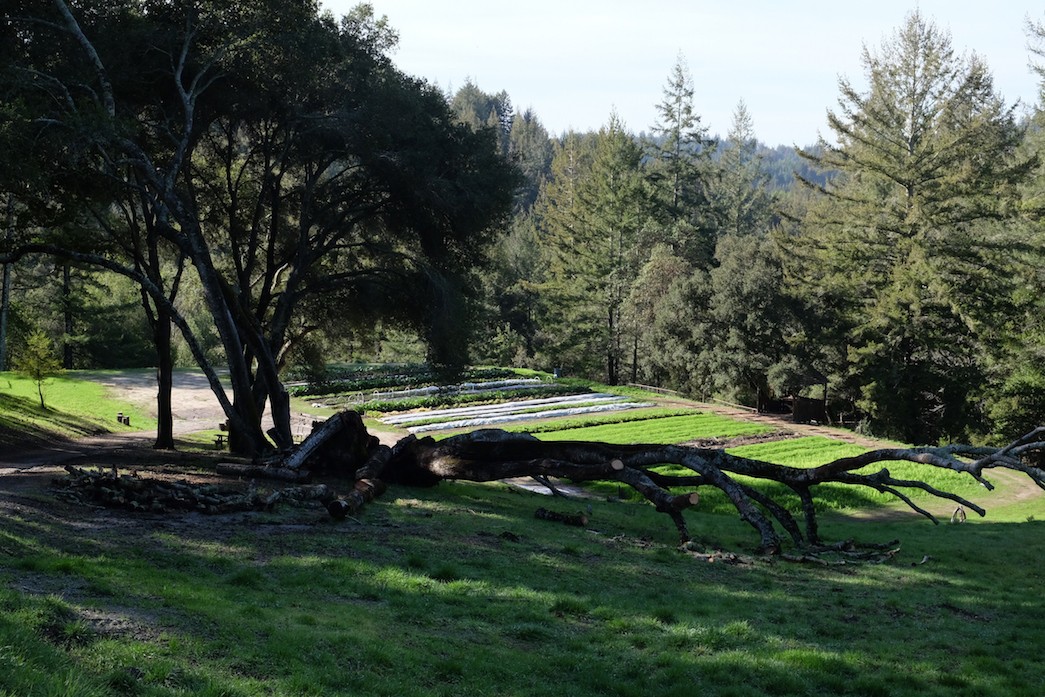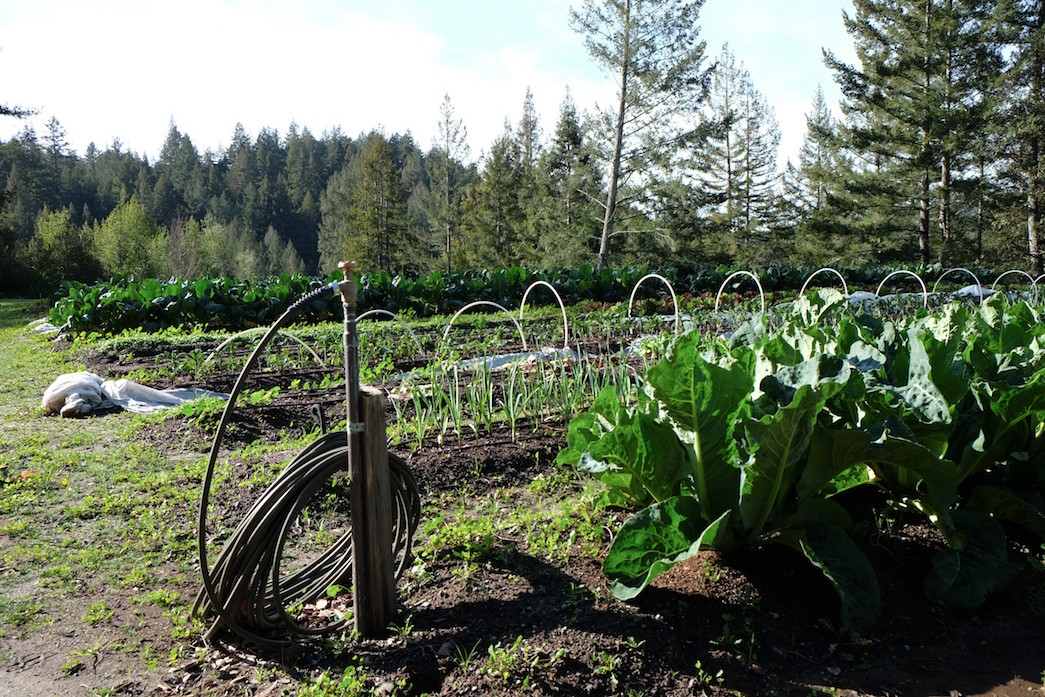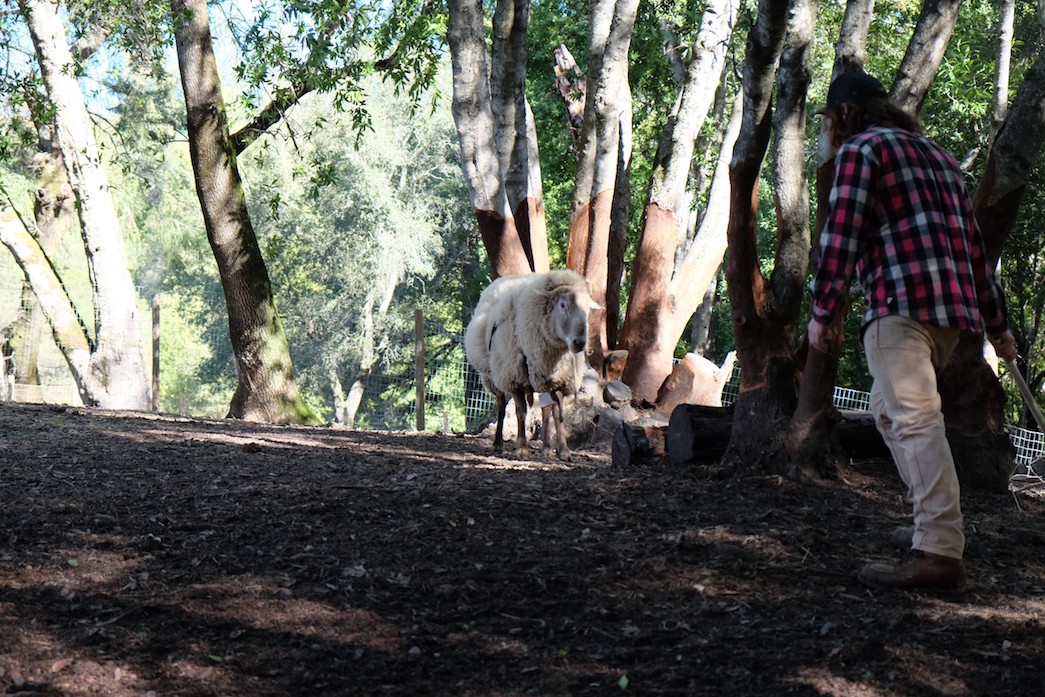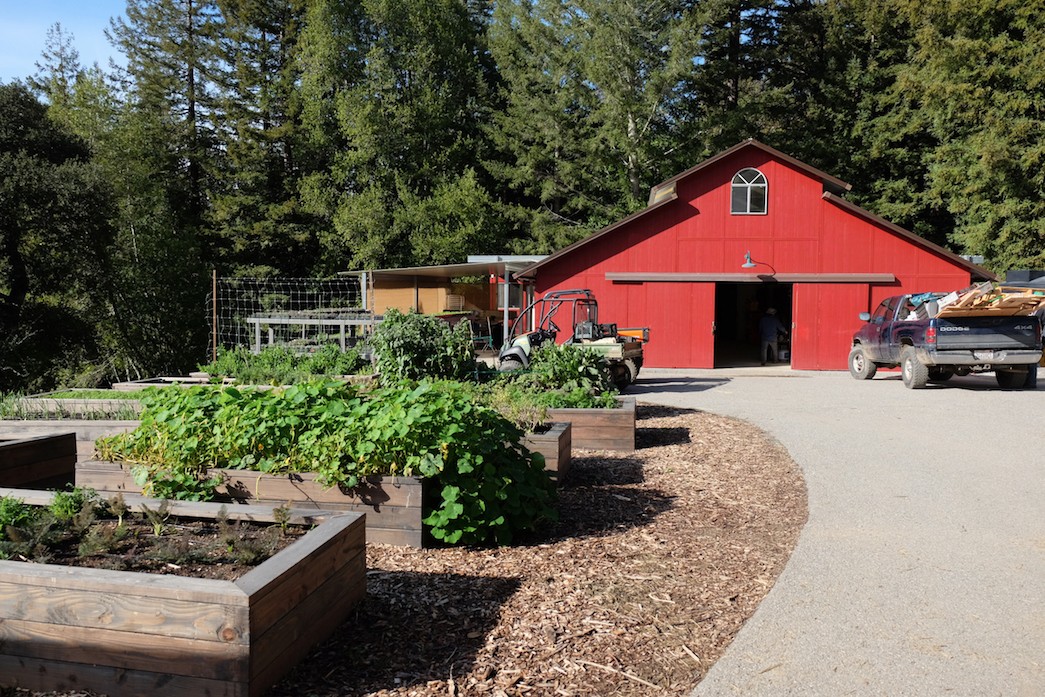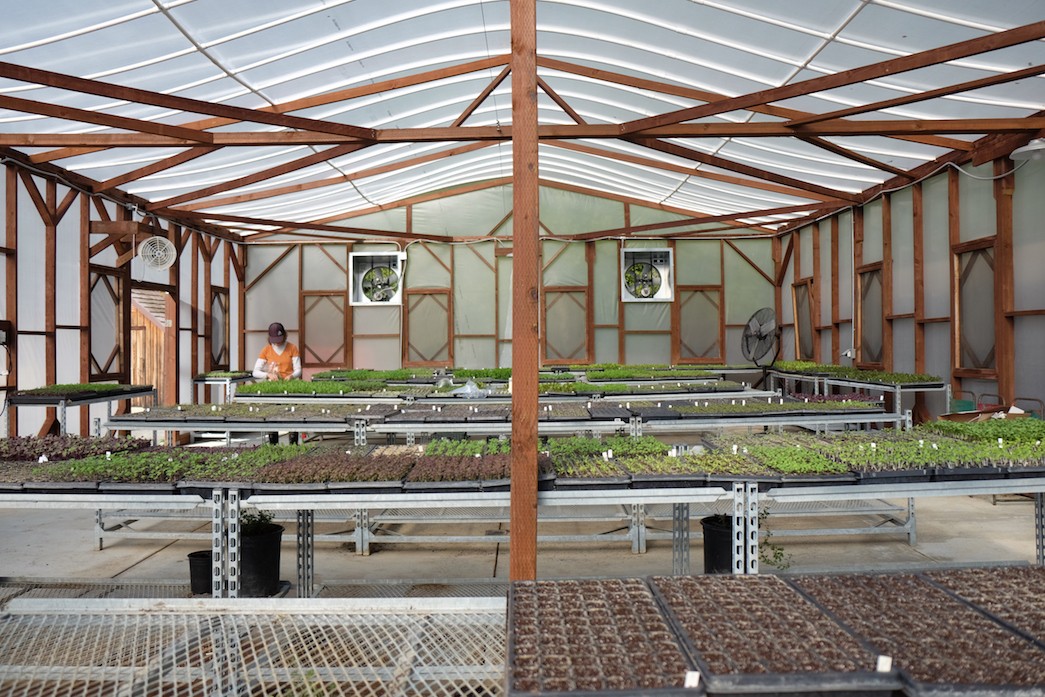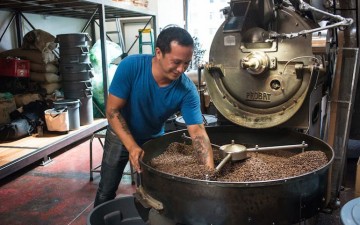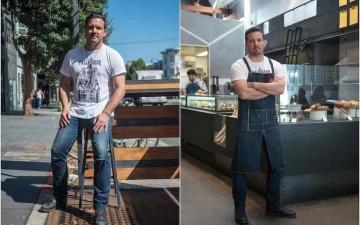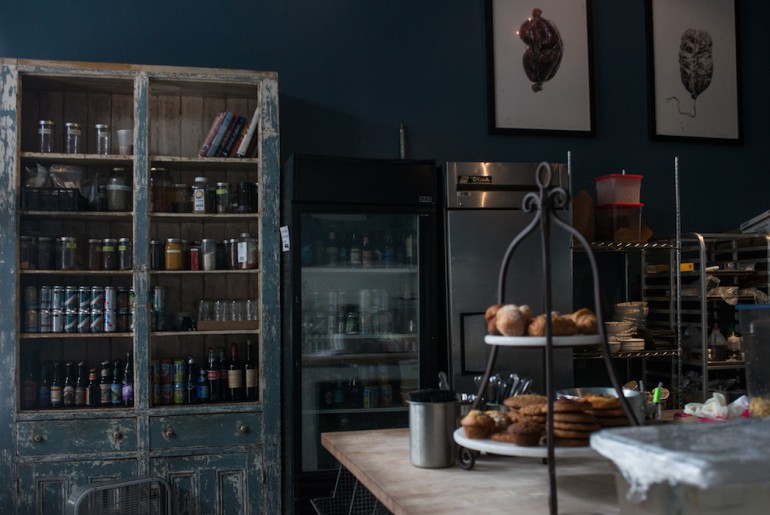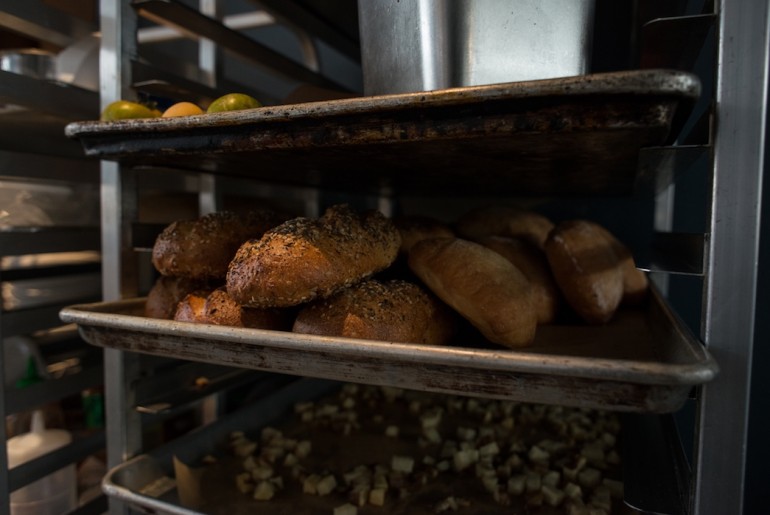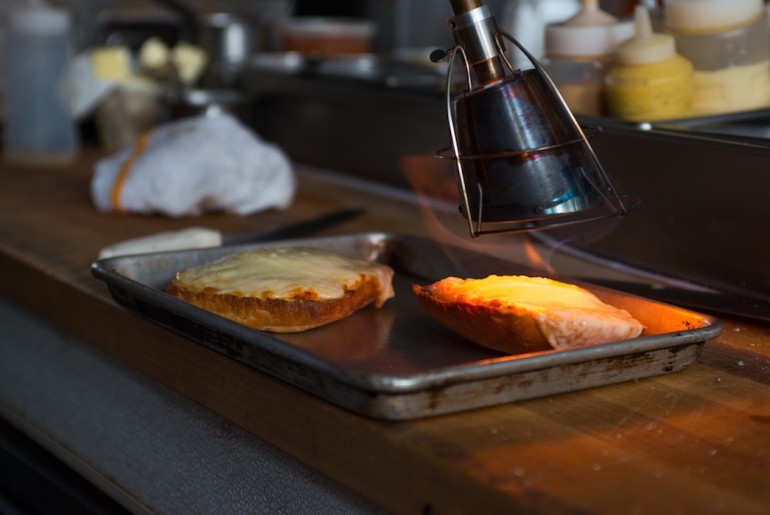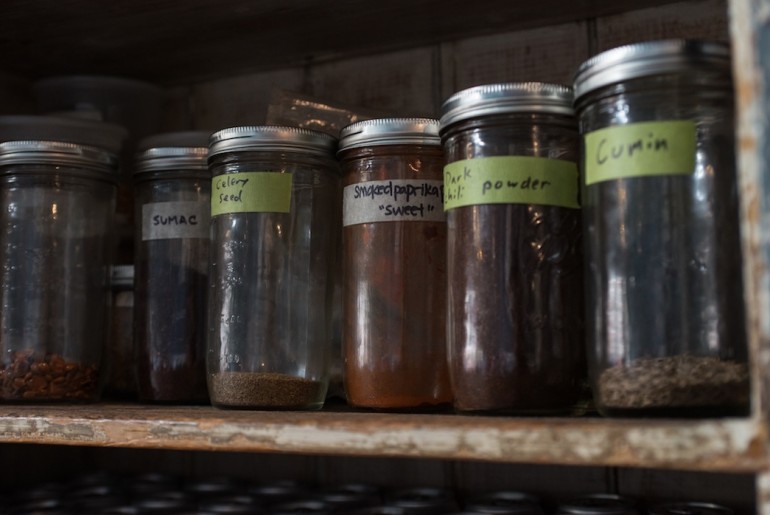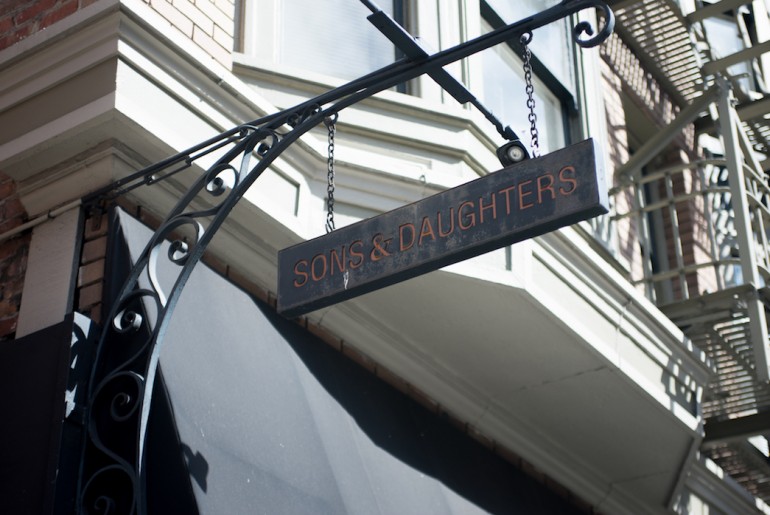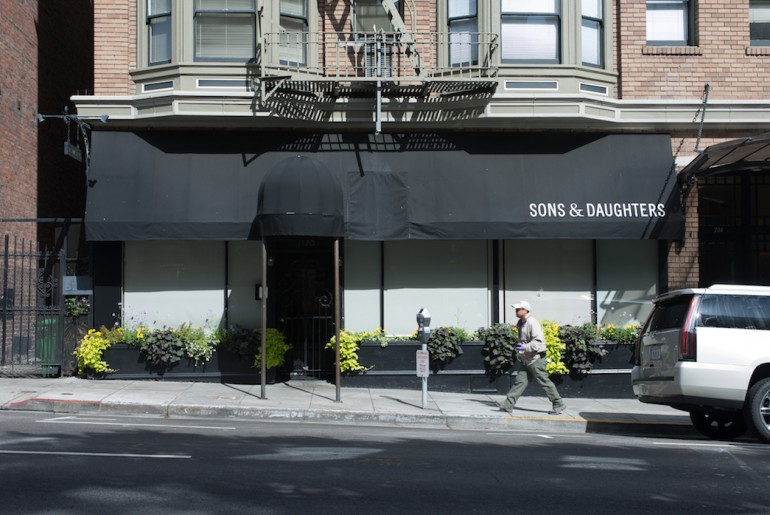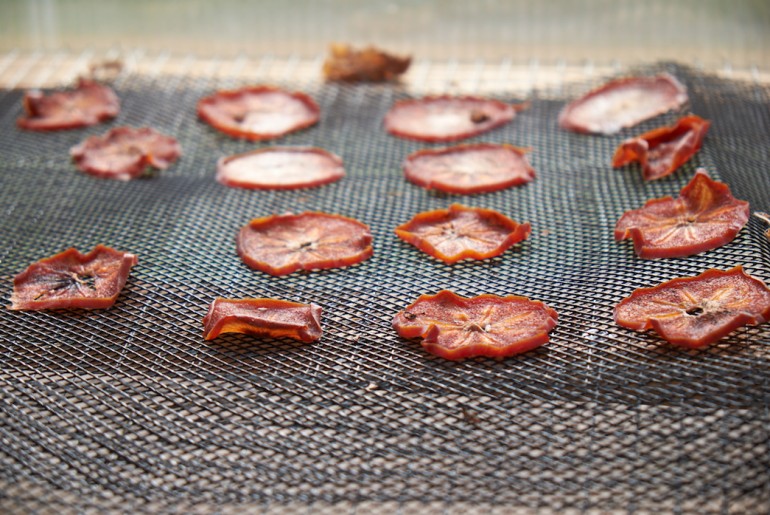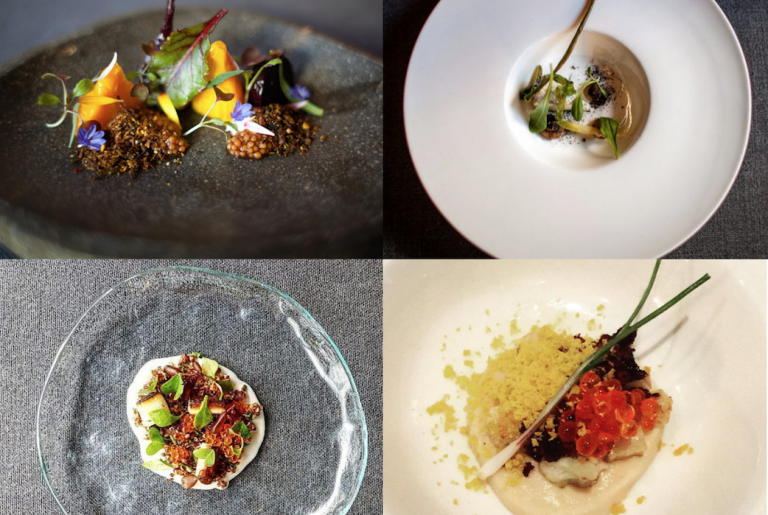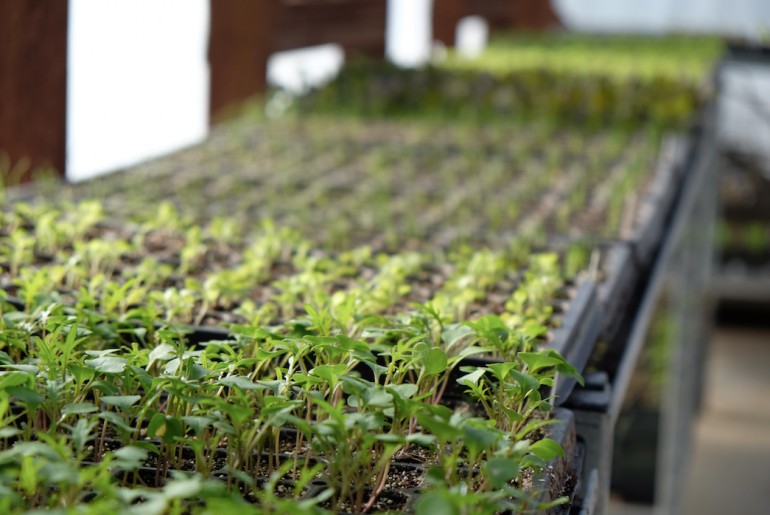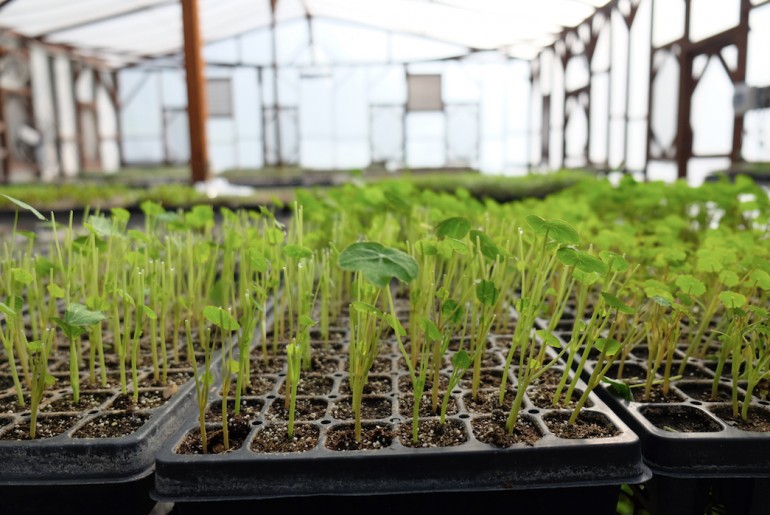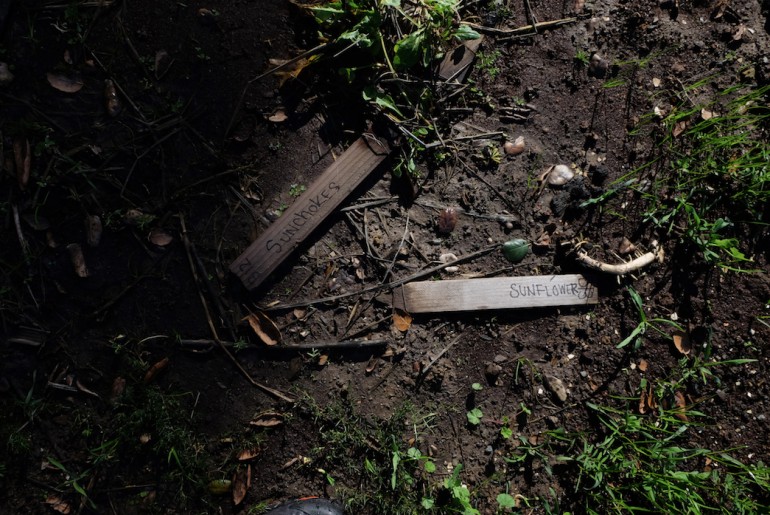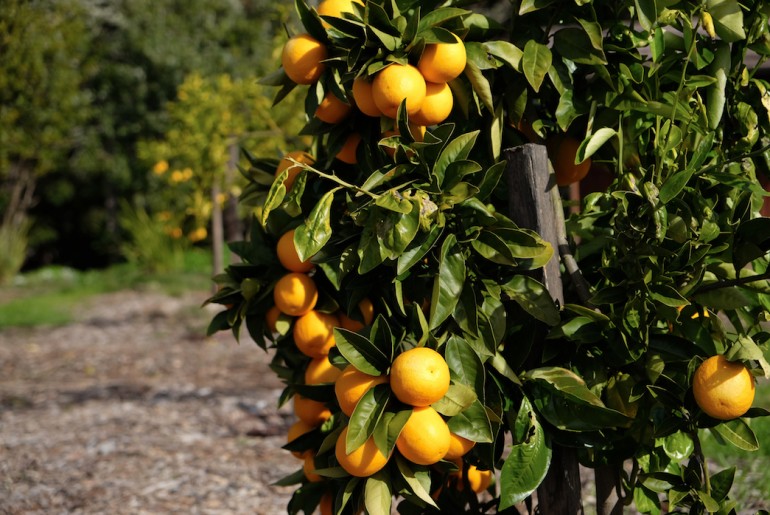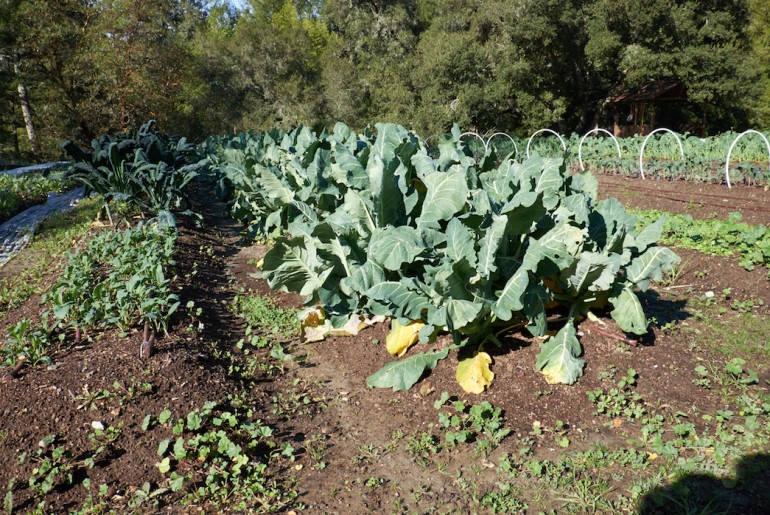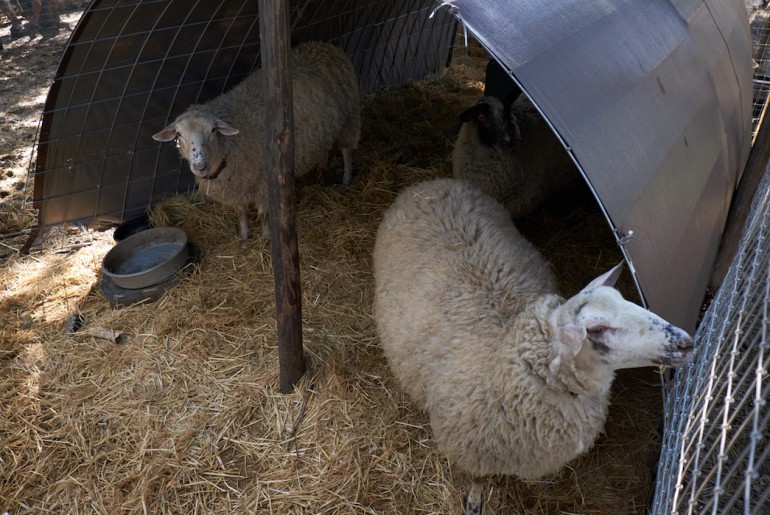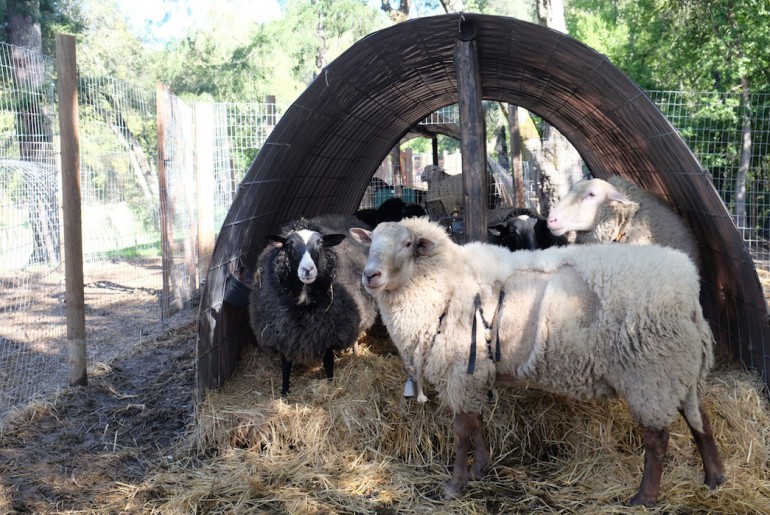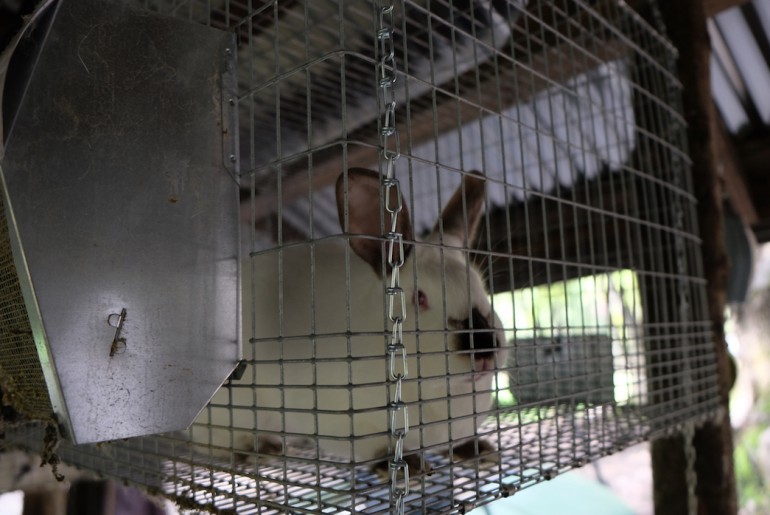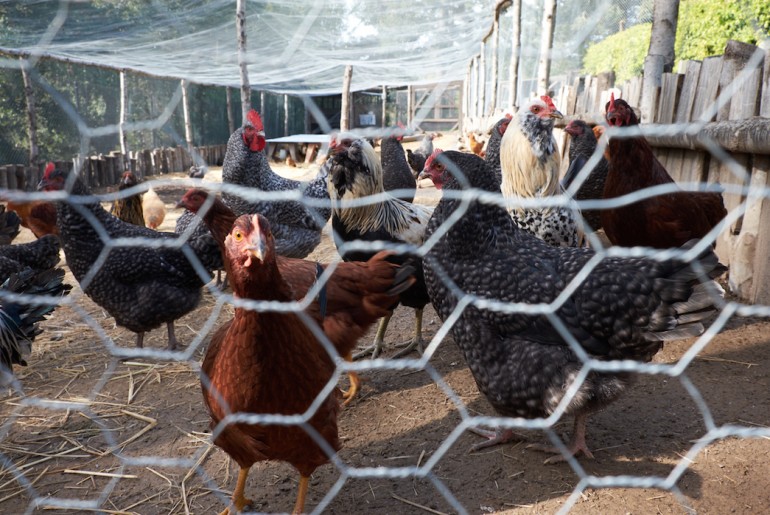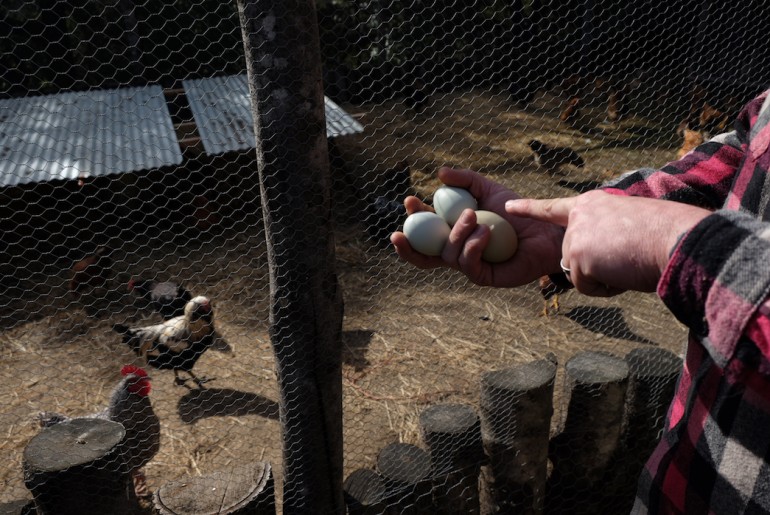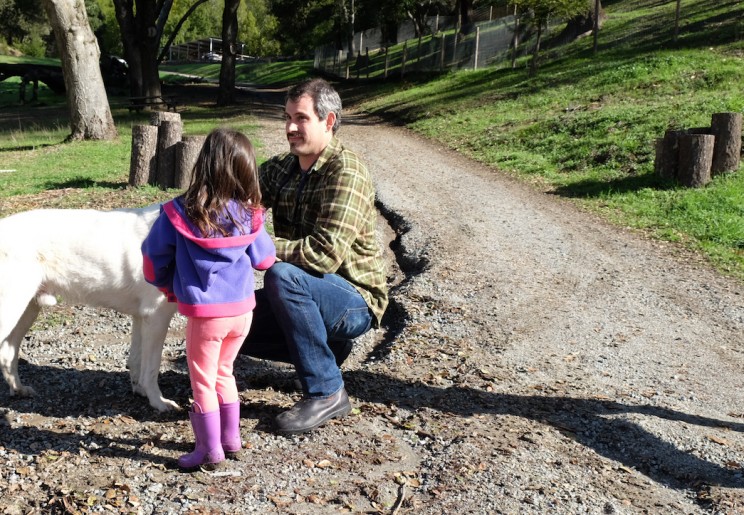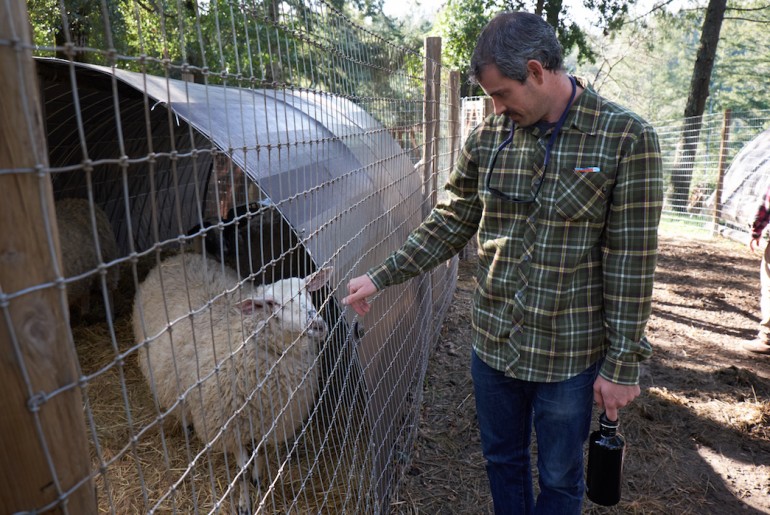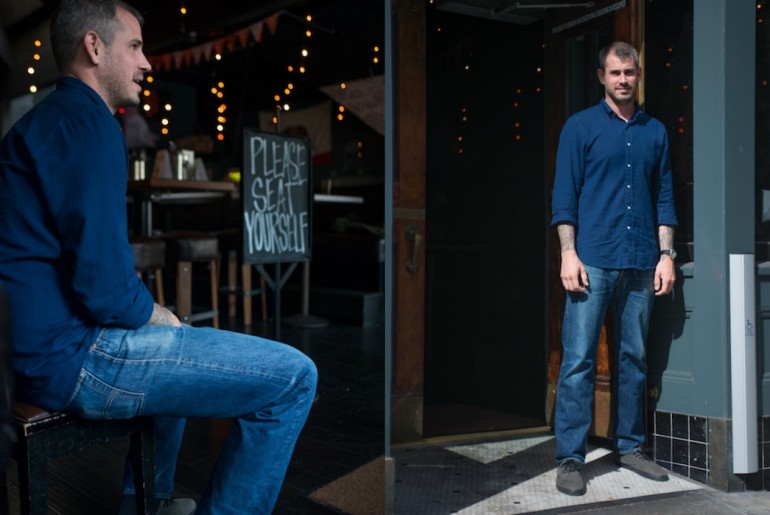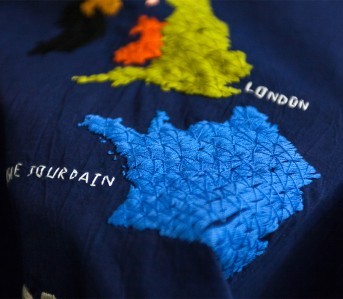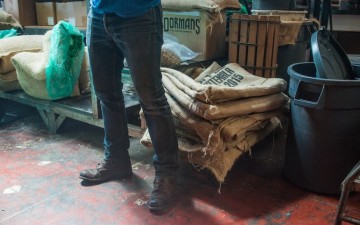Behind the Fades goes one step beyond our Fades features and examines not just worn, beaten up, and faded denim, but the people that made it that way.
The ram is not happy. We are too close to his ewes and it looks like he’s about to charge. He makes a short lunge and that’s all I need to concede defeat. Teague and Matt laugh but even they know that we’re no match for a protective ram. He makes one last charge as we slide out past the gate and close it. Maybe visiting the rabbits and vegetables will be calmer.
We’re at Dark Hill Farms in Santa Cruz, about an hour south of San Francisco. It’s a private farm solely dedicated to providing produce, meat, and herbs for Teague Moriarty and Matt McNamara’s restaurants, Sons and Daughters, Sweet Woodruff, and The Square.
I didn’t expect to end up here when Teague and I first talked about the restaurants a couple months prior. At the time, I had known Teague as one of the founders of Sons and Daughters, a respected Michelin starred restaurant that has been a steadily busy but under the radar establishment in the growing San Francisco scene. There had been some blurbs here and there about their garden and farm, but I didn’t give it much thought considering restaurants that list local farms or mention some sort of restaurant garden are usually somewhat exaggerated and really used more as a marketing tool. “Farm to table” has become just as much a buzzword as “handcrafted”, where it sounds appealing but is ambiguous enough that it’s impossible to know what it exactly means.
As we stood in the middle of a big field looking at rows of vegetables (with each row capable of producing literally a ton of food), I realized my “locally-sourced” prejudices were clearly off the mark. Teague and Matt explain how they’ve been planning out their crops and figuring out how to go from supplying 70% of what Sons and Daughters uses to almost 100% in the next couple years. This is what farm to table is supposed to mean.
Simplicity in ingredients, complexity in technique
The last 6 years has been a pretty wild ride for Teague. He started the Sons and Daughters with Matt after they both had stints working in different restaurants for a few years before they decided to go out on their own in 2010. What set Sons and Daughters apart was that they jumped straight into the world of fine dining with a focus on molecular gastronomy even though their resumes didn’t necessarily reflect any experience in either fine dining or molecular gastronomy. Neither had any major stints working for big names in the food industry but for Teague, it didn’t really matter nor did it seem like a roadblock. It was as simple as wanting to do something, finding the way to do it, and then doing it. Details along the way were worked out as they went and crazy enough, it worked out.
They quickly gained attention at first for their somewhat showy use of less conventional cooking techniques and creative dishes. Teague reflects on their first couple years, “We were younger, eager to impress, and felt this need to show everyone that we knew these crazy cooking techniques”. Since then, they’ve moved further away from the show aspect of things and shifted their focus to more ingredient focused dishes which is also what spurred the growth of their farm. “We still use a lot of the techniques as we did when we first started but the difference is that the focus is on how it brings out flavor instead of how cool it looks”. Now instead of finding infused foams and outlandish presentations, the dishes are simpler but there is a depth in the flavor that wasn’t as apparent before.
"Everything starts at this creek"
It’s always interesting listening to a chef talk about food. Sure, they have a different vocabulary but it’s not really that they use different language and more about how they’re able to describe flavors and textures by tying in other familiar flavors and experiences. For me, there’s usually an “Ah-Ha” moment when I hear them describe how something tastes in a way that I never could find the right words for. What I noticed when talking with Teague and also with Matt is that their knowledge of actually growing and harvesting the ingredients adds a second layer to their descriptions of flavors that just isn’t there when you hear other chefs speak. They can describe why dishes are created in a certain down to how they decided to plant the vegetables. It’s a 360 degree understanding of the food they’re making.
It sounds so simple when they talk about it. Of course, it’s definitely not as simple as it sounds. Just the fact that they’re at the mercy of nature and all the elements is daunting to try to plan around and figure out how to grow the staples that you need everyday at the restaurant when that particular vegetable doesn’t grow well year round. However, as we’re standing on a hill overlooking the farm, there is this simplicity about the whole thing that makes a lot of sense. Dark Hill is not a futuristic modern farm with complex machinery. The most elaborate thing on the farm is their irrigation and water system that feeds the farm from a couple creeks on the property. The creeks are their life source. “Everything starts at this creek. The same water that waters the crops also sustain our animals who then provide the natural fertilizer that keeps the crops healthy.” It’s definitely not a new concept but one that most people now have become very distanced from.
With Matt’s growing knowledge and the help of their full time farmers, they’ve managed to maintain their farm using old techniques that require very little machinery and makes use of everything around them. It’s not the most efficient way of running a farm but they’re not that concerned with efficiency because efficiency can come at the price of less flavor and to them, that defeats the purpose of having their farm. It’s a stark contrast to how today’s society works but then again, that’s been their M.O from the beginning.
Simplicity
A few days after seeing the farm, we meet up at The Square, their larger and more casual bar/restaurant, to shoot some photos of Teague and the jeans he’s been wearing for a while now. They’re a pair of Levi’s Vintage Clothing 501s that started off the dark raw indigo color that Levi’s Cone Mills denim is known for and now, through repeated washing and constant wear, have faded to a light blue. They’re not the high contrast jeans that a lot of people swoon over but they do show wear patterns and reflect the life Teague has as a chef, restauranteur, and now father. There are subtle whiskering, knee fades, and marks from knives, wallet, and keys. He’s not fussy about the jeans he wears as long as they are functional and comfortable. The fading and wear of the jeans will happen however they happen.
As for what’s to come in the future for Teague and Matt, these days Teague have taken a step back from being in the kitchen to focus on managing their restaurants while Matt has moved from the kitchen and even San Francisco to tackle managing the farm fulltime. They made the big decisions to promote one of their chefs, Galen Vasquez, to Chef de Cuisine and since then they’ve worked out the best way to coordinate information about what the farm is and can grow, what crops are ready to be used, and what the restaurant needs. There are more big moves ahead with the farm as they push forward towards their goal of being a closed loop with the restaurants and farm so instead of expanding to more restaurants, the focus is on what they’ve already built and how to make it better.
They’ve got some challenges ahead but as usual they’ll hammer out the many little details as they go. It’s a simple approach to big plans and judging from what they’ve done so far, they’ll figure it out and the results will be better than they planned.
Sons and Daughters is located at 708 Bush St. in San Francisco.
Images by Taylor Reyes of TylerShoot.

